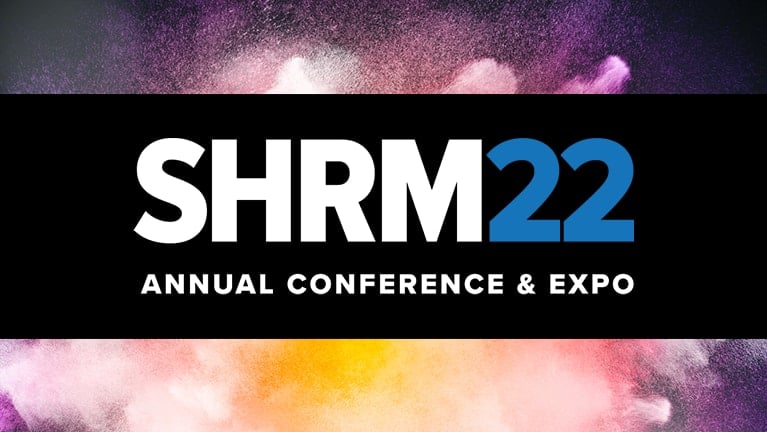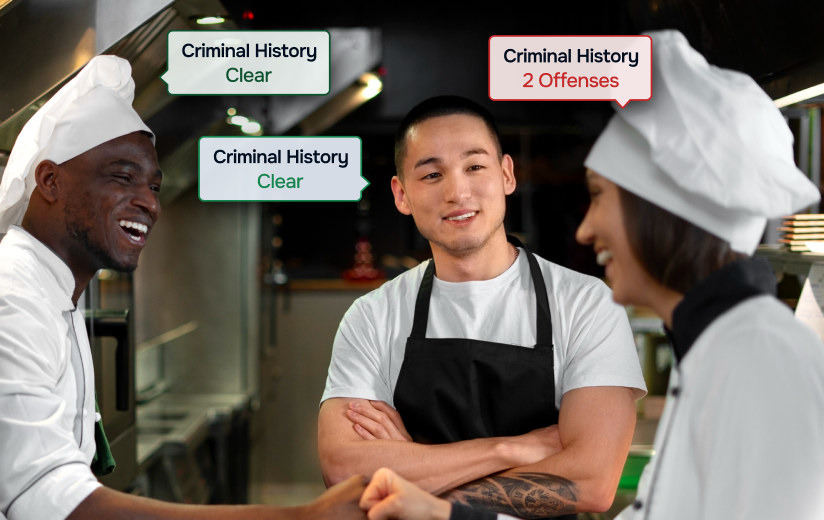The Society for Human Resource Management’s (SHRM) 75th annual conference recently wrapped up in Las Vegas. If you were there, you had the chance to connect with tens of thousands of attendees, representing SHRM’s 300,000+ members from around the globe.
Many attendees came to the conference in search of precisely the kind of solutions your business offers — namely, how to enable their hiring decisions with actionable, accurate, and cost-effective background screening.
The problem is, yours was hardly the only background screening company with a SHRM conference presence. In fact, by our accounting , there may have been as many as 70 CRAs in attendance, each one talking to the same pool of potential customers and offering similar services, perhaps undifferentiated in the customer’s mind.
Now that the conference is over, how can you segment and follow up with your dozens of new leads to distinguish your CRA and optimize your return on investment (ROI)? What lessons can you apply from this year’s conference to prepare to make an impression next year?
For answers to these questions, we sat down for a post-SHRM debrief with veteran exhibitor Nick Fishman. Nick co-founded, owned, and operated EmployeeScreenIQ, a nationally recognized consumer reporting agency, for 16 years. He currently serves as Chief Marketing Officer at InformData.
Editor’s note: The following conversation originally took place during an episode of InfomData’s Inform Yourself podcast. It has been condensed and edited for clarity.
How can a CRA stand out with so many background screening companies attending this single event?
Nick Fishman: The biggest thing CRAs need to do — both during and after the conference — is find a clear differentiator. Everybody in background screening now is talking about expedited turnaround time, low costs, best practices, compliance, and so on. Those are all really good things, but they have become table stakes.
You have to be noteworthy first and then memorable. There might have been as many as 60 to 70 different background screening exhibitors at this conference. So, when you call or email one of the prospects that stopped by your booth, you have to remind them who you were and find a way to look different than everybody else.
A way you can get ahead of this prior to the conference is by engaging with prospects before the event. Between a show participant list which is often available prior to the show and your current customers and prospects, there are a good number of people that you can tease with information about your upcoming presence to get them familiar with you and make you one of the vendors they put on their "must see" list. Give them a reason to want to invest time with you.
How else can CRAs maximize their exhibits?
NF: Somebody told me this statistic a long time ago, and as far as I know, it still rings true: 80% of all leads from trade shows are never followed up on. So that is a perfect place to start. Let’s look at following up with the people we met there.
The other thing to remember about this conference is that only a small portion of the attendees actually have anything to do with their organizations’ background screening practices. CRAs should look at all their leads to see who really influences the background screening process. Those are going to be the folks you want to concentrate most on. Once you whittle down that list, perhaps it becomes more manageable.
You also need to recognize the seniority of the prospect. SHRM attendees include a lot of HR generalists. And while they are very important to the profession and have a lot to do with interacting with background screening companies, they might not necessarily be the decision-makers determining which background screening company gets selected.
That said, they can be very influential in getting you in front of the people who sign the contracts. So, make these people feel part of the process because they can be your advocates.
What are some specific ways CRAs can segment their leads to ensure that they’re connecting with the right people?
NF: You need to ask, “Who is your target audience?” Do you have a specific niche? Let’s say it’s in health care. Then you would want to go after all the health care clients that stopped by your booth. If it’s a specific company size, you’ll want to go after companies with X number of employees or more.
Participating in the SHRM conference is costly, but often there is very little ROI. Can a CRA evaluate its success in other ways?
NF: I’ve been in the CRA’s shoes where you spend an awful lot of money exhibiting at this conference, and you wait for all the leads to turn into opportunities, and those opportunities to turn into closed accounts. It doesn’t always happen. It doesn’t happen quickly — I can tell you that for sure.
So, number one, measure your ROI over a reasonable period of time. If you’re only measuring your ROI based on what you closed within the last couple of months after SHRM, you’ll find that your expectations probably haven’t been met. In some cases, it would take us multiple shows to close leads that we met at these conferences.
I would also advise CRAs to manage their expectations as far as what ROI means to them. Of course, everyone wants to close accounts. But there are other ways to look at ROI when you go to a show.
What is the PR effect? What is the brand effect? How many times do people engage with you and what you stand for? In marketing, there’s an old saying that people need to see your logo or brand at least seven times before they trust you.
Watch for changes in website traffic following the conference. Visitors may have seen you and may have even listened to your booth demo but chose not to engage at the show. Make sure you have content on your site that speaks to the show attendees as a way to welcome people who saw you at the conference but did not engage until afterward.
Client engagement is also really important. Find your existing customers who will be there and use the conference as an opportunity to solidify your relationships. That’s ROI right there that you can measure pretty quickly.
Is there anything that you recommend CRAs avoid doing at a conference?
Don’t make this an arms race. CRAs often try to outdo each other at events like the SHRM conference. They’re playing a game that they can never win.
You’re not necessarily going to have better ROI because you had a better booth, a bigger booth, more people there, or any of those things. Make sure you’ve done the prep work before the show and have a solid follow-up plan. Focus on the quality of what you’re doing, not the dollars you’re spending.
My biggest piece of advice would be to do what you are comfortable doing, and spend what you are comfortable spending at this conference — and make the most of it from there.
Thank you so much for sharing your experience and wisdom!
Watch or listen to the complete unedited podcast here or search for “InformData” on your favorite podcast app.

